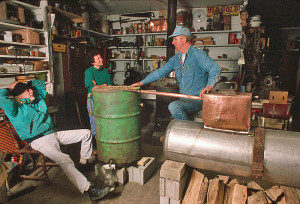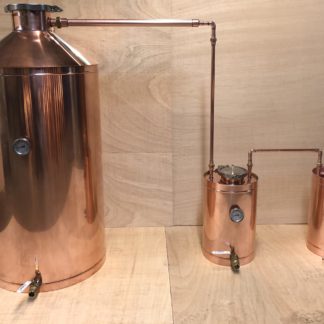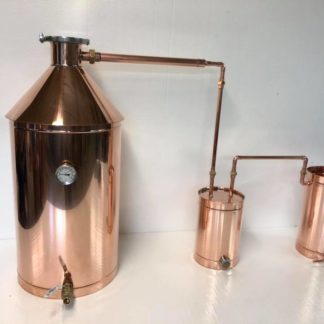Why Making Moonshine at Home is So Much Fun
The allure of making moonshine at home has captured the imaginations of many, especially those who love experimenting, learning new skills, and adding a touch of creativity to their lives. Moonshining is a practice that dates back to the 18th century, but it’s still just as exciting today. Making homemade moonshine is an incredibly fun and rewarding hobby for those who enjoy mixing science, art, and a bit of rebellion. Here’s why making moonshine at home can be so much fun.
The Thrill of Crafting Something From Scratch
There’s something special about making moonshine yourself. It’s not just about drinking; it’s about the process. From gathering ingredients to monitoring fermentation, distillation, and bottling, every step feels like an achievement. Whether it’s the satisfaction of mashing your grains or the excitement of watching the alcohol drip from your still, the entire process is a learning experience that can take you down a rabbit hole of new knowledge. It’s a hands-on project that’s as fulfilling as it is fun, especially for those who love working with their hands.
A Science Experiment With Tasty Results
Moonshining is a mix of science and art. The fermentation process, which turns sugars into alcohol, involves a bit of chemistry that can seem like an intriguing experiment. You’ll need to understand yeast, fermentation, and the role of temperature in creating the perfect batch. Then comes the distillation process, where the magic happens—separating alcohol from water using heat and careful monitoring. It’s like creating your own science lab at home, where trial and error lead to a delicious reward.
Customization and Creativity
One of the most exciting parts of making moonshine is the ability to get creative with the flavors. You can start with a basic recipe, but from there, the world is your oyster. Want to make a peach-flavored whiskey? Go ahead. Maybe you prefer something spiced or even infused with herbs. The possibilities are endless, and the ability to experiment with different fruits, spices, and sugars means you can create your own signature spirits. It’s a personal touch that you just can’t get from a store-bought bottle.
A Sense of Achievement and Pride
There’s a unique satisfaction in crafting something yourself, especially when it’s a beverage that’s typically purchased from stores. When you finally take that first sip of your homemade moonshine, you’re not just enjoying a drink—you’re savoring your own hard work, creativity, and persistence. The pride in knowing that you created it yourself is a feeling that you can’t replicate when buying from a shelf. Plus, sharing it with friends and family can give you a sense of accomplishment, and the compliments will be well worth the effort.
A Connection to History and Tradition
Making moonshine can also be a way to connect with history. Moonshining has deep roots, especially in American folklore, with its association with bootlegging during Prohibition. While it may not be as risky today, making moonshine still carries a sense of rebelliousness and tradition. By brewing your own spirits, you’re taking part in an age-old practice that was once an essential part of rural life. The thrill of living out this piece of history makes the whole process more exciting, especially if you enjoy learning about the cultural significance of what you’re doing.
Bonding With Others
Making moonshine can also be a social activity, a way to bond with friends or family while doing something fun and unconventional. Many people enjoy the process of working together, whether it’s helping each other build a still, experiment with flavors, or simply share tips and tricks. It becomes an event—whether it’s a weekend project, a special gathering, or just an excuse to spend time with like-minded people. The process of distilling and tasting together adds an element of fun and camaraderie that makes it even more enjoyable.
The Adventure of the Unknown
Because moonshining requires some trial and error, it’s a bit like an adventure. Each batch might be different from the last, and there’s always the possibility of surprising results. Maybe one batch turns out sweeter, or another one has a stronger punch. It’s an exploration of flavors, techniques, and styles. This sense of unpredictability and the excitement of what’s to come next is what keeps people coming back for more.
A Fun Challenge for DIY Enthusiasts
For those who love a good DIY challenge, moonshining provides a perfect project. It’s a balance of crafting, engineering, and problem-solving. Building a still, getting the right equipment, and troubleshooting issues as they arise can make the process a rewarding challenge. There’s no shortage of tutorials and guides to help you along the way, but ultimately, it’s up to you to get the balance of ingredients, fermentation, and distillation just right. The sense of accomplishment from completing a DIY project as complex as moonshine brewing is unmatched.
Conclusion
It’s no surprise that many people find the process of making moonshine at home incredibly fun. The hands-on nature of crafting something from scratch, the science and creativity involved, and the satisfaction of seeing it through to the end are just a few of the reasons people enjoy making their own moonshine. Whether you’re looking to develop new skills, bond with friends, or simply add a little adventure to your life, brewing your own moonshine offers plenty of opportunities for enjoyment and learning. So, gather your ingredients, set up your still, and enjoy the ride—who knows, your homemade moonshine could turn into the next big hit at your next gathering!

 There’s a lot of myths and misconceptions surrounding the moonshining trade. Whether you’re an amateur ‘shiner’ or if you’ve been doing it for decades, there are probably some things you didn’t know about this hobby/profession. In this post, we’re going to cover some fast facts about moonshine, separating the truth from the fiction.
There’s a lot of myths and misconceptions surrounding the moonshining trade. Whether you’re an amateur ‘shiner’ or if you’ve been doing it for decades, there are probably some things you didn’t know about this hobby/profession. In this post, we’re going to cover some fast facts about moonshine, separating the truth from the fiction.

